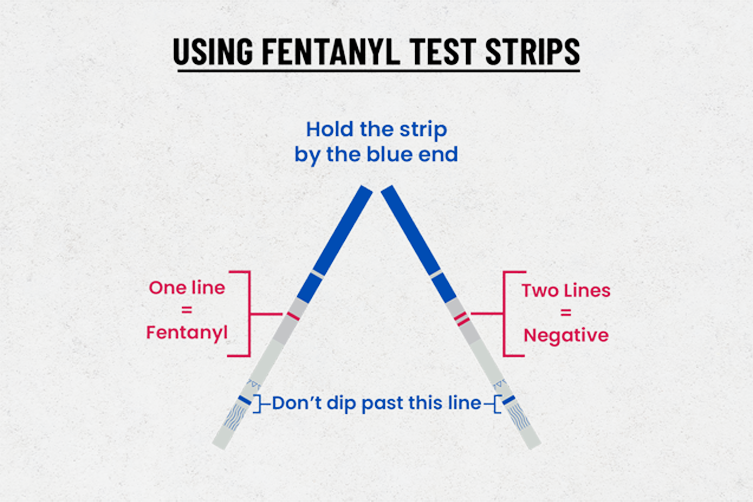What Is Fentanyl?
Fentanyl is a powerful synthetic opioid that is similar to morphine but is 50 to 100 times more potent. Fentanyl has been found in substances such as heroin, meth, MDMA (ecstasy/molly), cocaine, and other recreational drugs and may be responsible for 75% of all deaths due to drug overdose. Fentanyl has no specific look or smell and is sometimes used in manufacturing other drugs due to its low cost.
Why Is Fentanyl Dangerous?
The high potency of fentanyl greatly increases the risk of overdose. People may not be aware they are consuming it because it can be disguised as other drugs. Without being aware of its presence, it can be easy to underestimate the dose, resulting in overdose. As little as a grain of fentanyl can be enough to cause harm or even overdose.
What Are The Signs Of An Overdose?
An overdose occurs when a drug produces serious adverse effects and life-threatening symptoms. When people overdose on fentanyl, their breathing can slow or stop. This can decrease the amount of oxygen that reaches the brain, leading to a coma, permanent brain damage, and even death.
Signs of overdose include
- Severe sleepiness/Not being able to stay awake
- Cold, slimy skin
- Trouble breathing, walking, or talking
- Slow heartbeat/Slow or no pulse
- Slow or no breathing, gurgling
- Skin looks pale, gray, blue, and feels cold
- Body is limp, will not respond to sound or stimulation
If you suspect someone has overdosed, the most important step to take is to call 911 so they can receive immediate medical attention. Once medical personnel arrive, they will administer naloxone if they suspect an opioid drug is involved.

Naloxone is a medicine that can be given to a person to reverse a fentanyl overdose. Multiple naloxone doses might be necessary because of fentanyl’s potency. Naloxone is available as an injectable (needle) solution and nasal sprays (NARCAN® and KLOXXADO®). Even if a person is not experiencing an overdose, giving them naloxone will not hurt them. If you notice the signs of overdose, always provide naloxone anyway to be safe. To learn more about naloxone visit NIH.com.
What is Naloxone And Who Should Carry It?
Family and friends: If you or someone you know is at increased risk for opioid overdose, especially those with opioid use disorder (OUD), you should carry naloxone and keep it at home.
People who are taking high-dose opioid medications (greater or equal to 50 morphine milligram equivalents per day) prescribed by a doctor, people who use opioids and benzodiazepines together, and people who use drugs, should all carry naloxone. Because you cannot use naloxone on yourself, let others know you have it in case you experience an opioid overdose.
California’s Good Samaritan law protects those giving emergency medical care at the scene of a medical emergency, including giving naloxone. Note that naloxone is not harmful if the person isn’t actually overdosing.
Where Can You Get Naloxone?
Anyone can get naloxone (Narcan) from a pharmacy or from a local organization that has a naloxone distribution program, such as a local opioid or overdose safety coalition or a syringe services program.
If you are a person who uses drugs and you do not have a resource in your community, you may be able to access mail-based naloxone through Next Distro.
The Naloxone Finder from the National Harm Reduction Coalition, provides information on how to locate naloxone in the community.
Educate others. Knowledge is power when it comes to substance use so take what you’ve learned and share it with your friends and family. To learn more read our blog What is Nalaxone and who should carry it?
How Can You Stay Safe?
Fentanyl Test Strips (FTS) can reliably identify the presence of fentanyl in substances. FTS are inexpensive, typically give results within 5 minutes, and can usually be found at local health departments or other community-based organizations.

Resources
